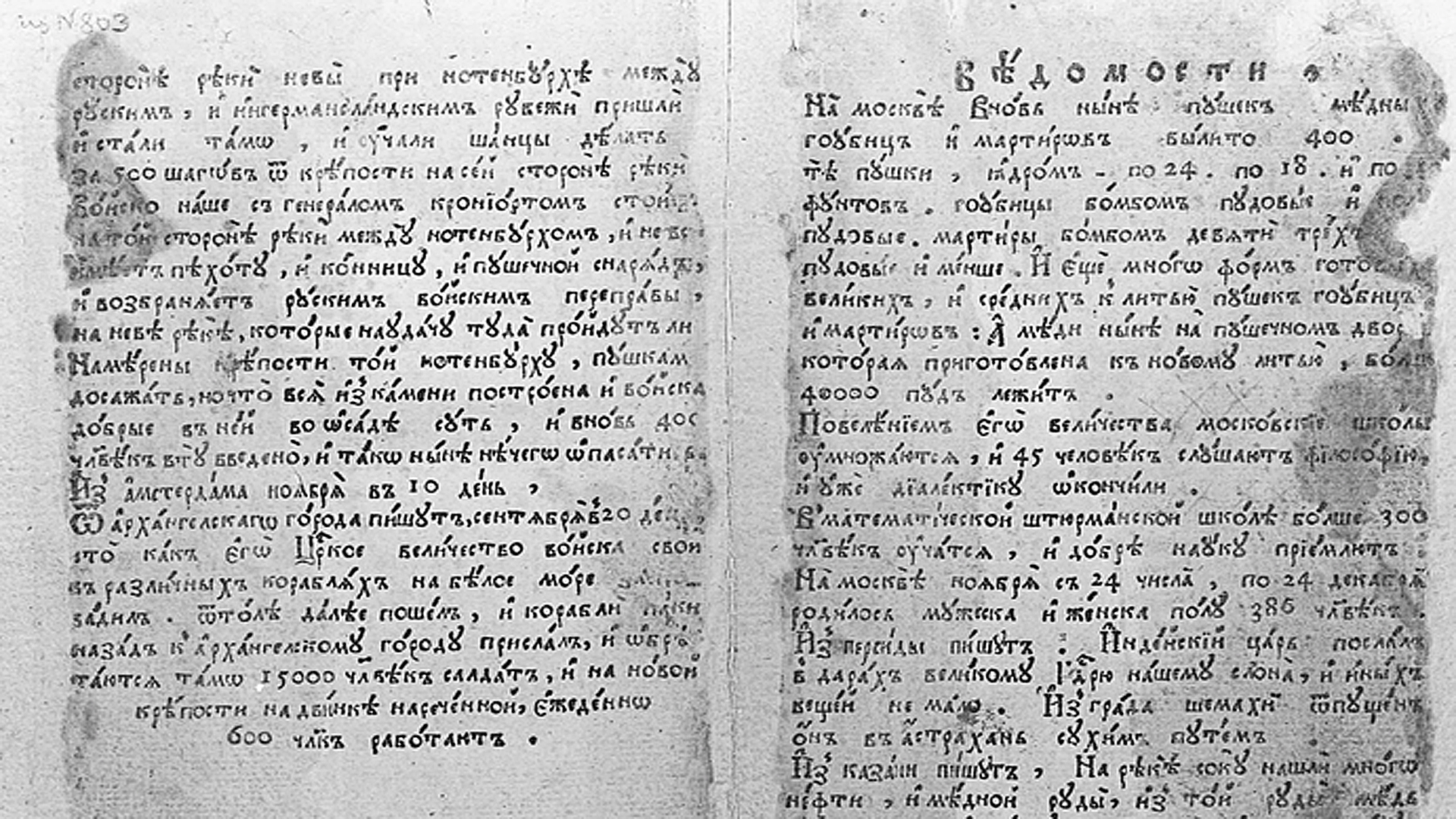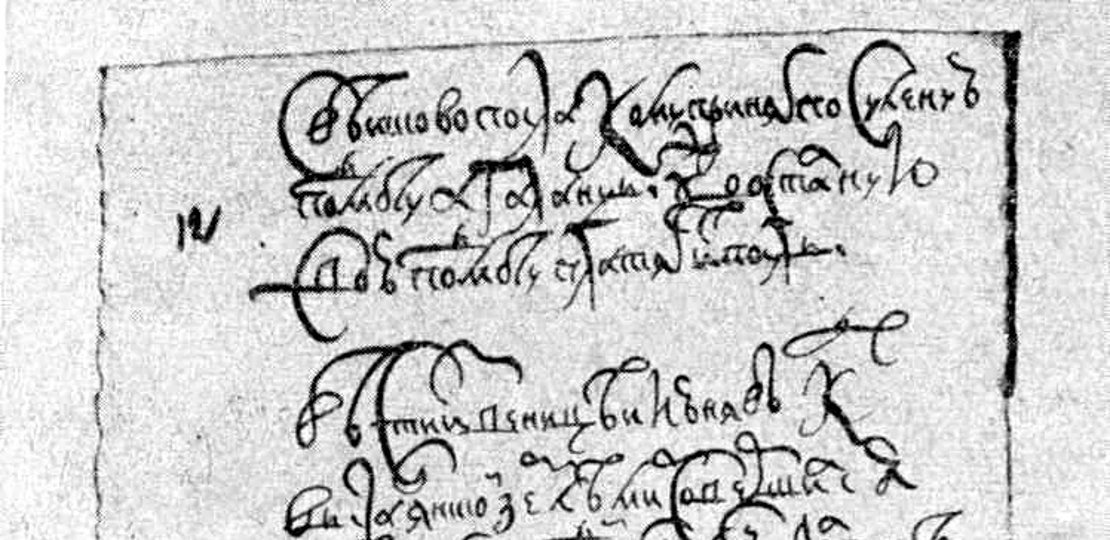Long before the appearance of the printed «Vedomosti» in Russia, a handwritten newspaper was published under the code name «Vesti – Courants». In the 17th and 18th centuries, newspapers were called chimes (French courant – running; German couranten – walking news).
It was believed that it began to appear in 1621, but earlier issues, compiled in 1600, have now been discovered.
The chimes came out in the form of narrow sheets of paper covered with a column, glued together and several meters long.
The newspaper was published specifically for the tsar and a narrow circle of confidants, to whom its contents were read aloud (this is evidenced by the notes «honored to the sovereign» and «honored to the sovereign and boyar»). But later, she began to correspond in several copies, which made it possible to get to know her and other strata of society.

The newspaper was prepared by the clerks of the Ambassador Prikaz. Already from the middle of the 17th century, the compilation of chimes was a well-established business. A huge editorial team, called the chimes, worked on them, which included translators, editors, scribes. Translations of the received news were made in different cities and sent in finished form from Novgorod, Riga, Pskov and other places. The editor-editor selected the texts and supervised the work of the scribes. He paid great attention to the location of the material, dividing it into semantic segments.
The bulk of the information was made up of translations of foreign newspapers, which, since 1631, were constantly delivered to the Ambassadorial Prikaz. Information for the newspaper was also received from the governors of foreign cities, such as Novgorod, Astrakhan, Pskov, from merchants and from other persons who came to Russia from different countries. The most versatile information was obtained from the article lists (reports) of Russian ambassadors who visited abroad.
A well-known correspondent was Isaac Massa, who delivered sheets about the relationship between the English and French kings, about the events in Rome, Vienna, Prague. Melcher Beckman sent newsletters about events in Sweden, Gdansk and Krakow, and Justus Filimontus from Riga and St. George’s Livonsky.
The chimes covered a very wide range of events. The main attention was paid to military operations: reports of military preparations, campaigns and battles, Also they cited speeches of statesmen, messages from the Seimas and Zemsky assemblies, articles of treaties. They wrote about various natural phenomena, natural disasters, fires, prophecies, and miracles (a miracle in the sea with a human head, a body like a cancer and a wide tail).
At present, the chimes are available to readers in the form of a multivolume scientific commented edition prepared by the V.V. Vinogradov Institute of the Russian Language.

